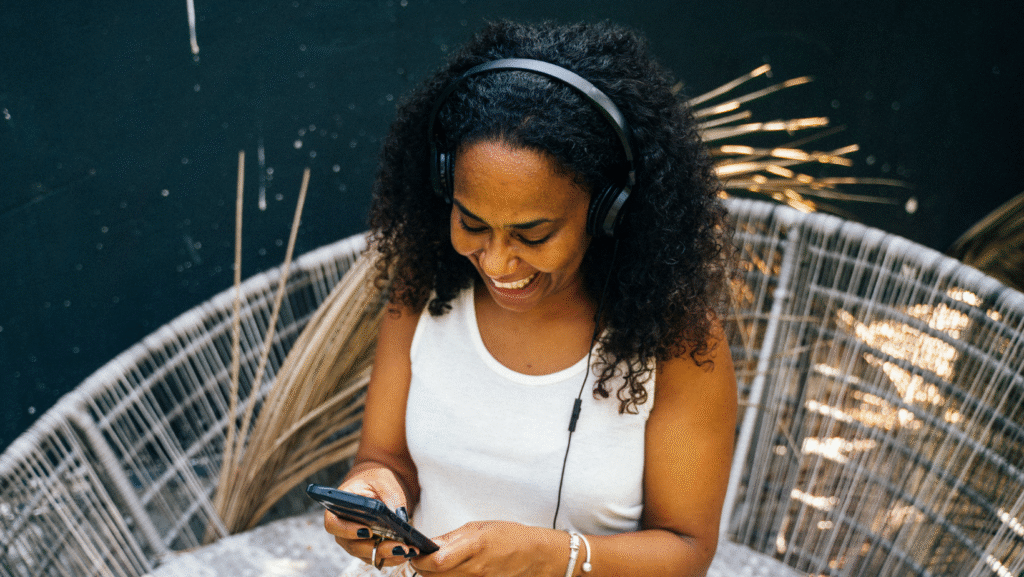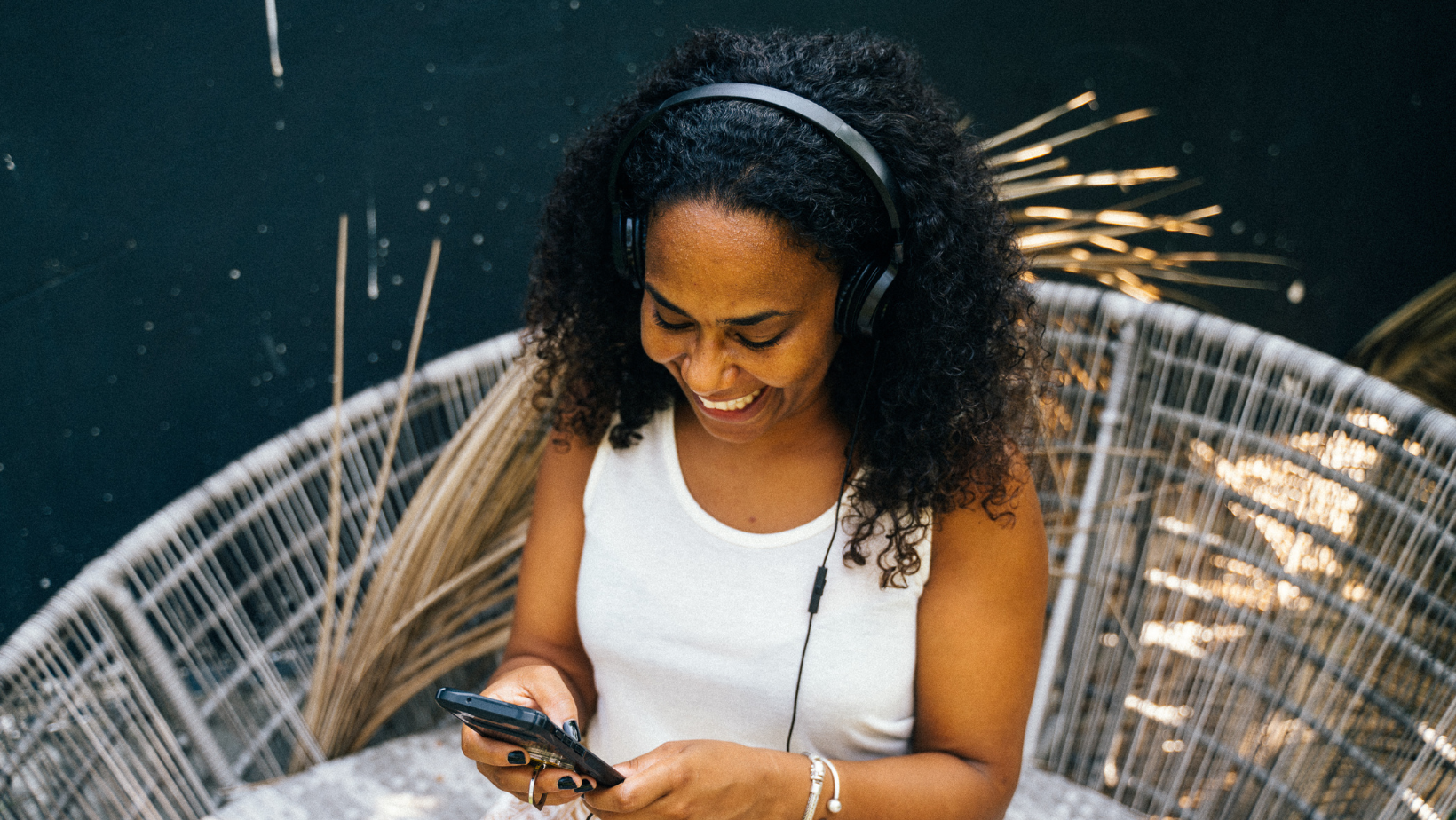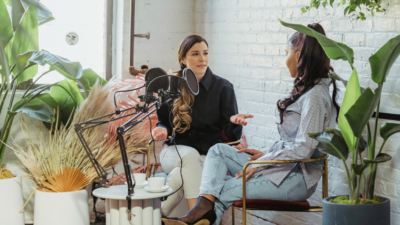
So you want to launch a podcast. Podcasts are one of the most powerful ways to share your story, build authority, and connect with your audience in a human way. Whether you’re a business leader, creator, or simply passionate about a topic, podcasting can help you scale your message and build lasting trust.
But before you hit “record,” there’s a lot that goes into getting your show off the ground. We’re here to simplify the process and help you launch with clarity and confidence. Below, we’ll walk you through the essential steps to prep your podcast—including how to choose between audio-only and video podcasts—and offer a free checklist to keep you on track.
Step 1: Define Your Concept
Start with clarity. Before any tech or editing tools come into play, answer these:
- What is your podcast about?
- Who is it for?
- What will make your show different?
Niche down your theme and target audience so your content is clear, focused, and memorable.
Pro Tip: Give your podcast a working title early—it helps frame your identity and direction.
Step 2: Audio vs. Video Podcast—What’s Right for You?
One of the biggest decisions you’ll make is whether to go audio-only or add video. Here’s how to decide:
🎙️ Audio-Only Podcasts
Pros:
- Easier and faster to produce
- Lower equipment and editing costs
- Listeners can tune in while multitasking (commuting, walking, etc.)
Cons:
- No visual connection with audience
- Fewer repurposing opportunities (e.g., for YouTube or social reels)
Best for: Thought leadership, interviews, storytelling, or solo episodes when visuals aren’t essential.
📹 Video Podcasts
Pros:
- Greater discoverability on platforms like YouTube
- More engaging and personal—viewers see facial expressions, body language
- Endless content repurposing: reels, shorts, TikToks, trailers
Cons:
- Requires more gear (camera, lighting, editing)
- More time-intensive to edit and polish
- Higher file storage and upload requirements
Best for: Personal brands, panel shows, or anything visual—product demos, reactions, lifestyle content.
Pro Tip: You can always start with audio and expand into video later—or record both and upload the video version to YouTube while using the audio for podcast apps.
Step 3: Choose Your Format
Once you know if you’re doing video, audio, or both, decide:
- Solo, co-hosted, or interview-based?
- Episode length (15, 30, 60+ minutes?)
- Publishing schedule (weekly, seasonal, evergreen?)
Keep your audience’s habits and your capacity in mind.
Step 4: Plan Your First Episodes
You don’t need a year’s worth in advance, but mapping out your first 5–10 is key.
- Create a podcast tracker in a spreadsheet or project management tool
- Choose titles and themes
- Plan segment structure (e.g., intro > core > outro)
- Reach out to guests (if applicable)
Pro Tip: Record at least 4 episodes before you launch. This gives you a content cushion and shows new listeners your show has substance.
Step 5: Set Up Your Tech Stack
What you need will depend on whether you’re doing audio-only or video:
| Equipment | Audio Podcast | Video Podcast |
|---|---|---|
| Mic | USB (Blue Yeti, Samson Q2U) or XLR (Shure SM7B) | Same mic, plus… |
| Camera | Not needed | DSLR/webcam (Sony ZV-1, Logitech Brio, or iPhone with stand) |
| Lighting | Not needed | Softbox or ring light (natural light can work too) |
| Recording Software | Riverside, SquadCast, Zencastr | Riverside |
| Editing | Descript, Audacity, GarageBand | Final Cut Pro, Adobe Premiere, Descript for video/audio in one |
| Hosting Platform | Buzzsprout, Libsyn, Spotify for Podcasters, Captivate | Same platforms support audio; for video, also upload to YouTube |
Step 6: Create Your Brand Assets
- Design your podcast cover art (various sizes based on distribution platforms)
- Create your podcast description and show notes template
- Script your intro and outro (and record music bumpers if needed)
- Choose music (royalty-free or custom)
If you’re doing video, make a thumbnail template for YouTube, and branded lower-thirds (name titles) if you’re adding polish.
Step 7: Build Buzz Before Launch
Start talking about your podcast well before launch day.
- Post teaser trailers or video snippets
- Share behind-the-scenes content of your setup
- Create countdown graphics and stories
- Build an email list or early access waitlist
- Ask friends or peers to support you with reviews on launch
Pro Tip: Launch with multiple episodes (3+), not just one. It gives people more to binge—and more reasons to subscribe.
Your Podcast Launch Checklist
Here’s your streamlined checklist for audio or video podcast prep:
General
- Define concept, name, and ideal listener
- Choose format and schedule
- Plan 5–10 episodes with titles
- Script intro, outro, and episode structure
- Choose music (royalty-free or custom)
- Design cover art and graphics
- Set up hosting account and submit to directories
🎙️ Audio-Specific
- Purchase mic and pop filter
- Choose recording + editing software
- Record and edit trailer + first 3 episodes
- Export in .mp3 format
- Add ID3 tags and upload to host
📹 Video-Specific
- Get camera, lighting, and backdrop setup
- Record with high-quality video and audio
- Edit visuals and add intros, lower-thirds, thumbnails
- Export for YouTube and short-form platforms
- Upload to YouTube, TikTok, Instagram
Promotion
- Announce launch date
- Post teaser content
- Share video clips or audiograms
- Email list with early access or updates
- Ask for ratings, reviews, and shares
- Track performance and adjust strategy
Ready to Launch?
Podcasting is more than pressing “record.” It’s about showing up with clarity, strategy, and heart. Whether you choose audio-only or dive into video, the key is to stay consistent and focused on your message.
Need help launching or producing your podcast? We’d love to help. Get in touch with our team to make your podcast launch smooth, strategic, and unforgettable.


